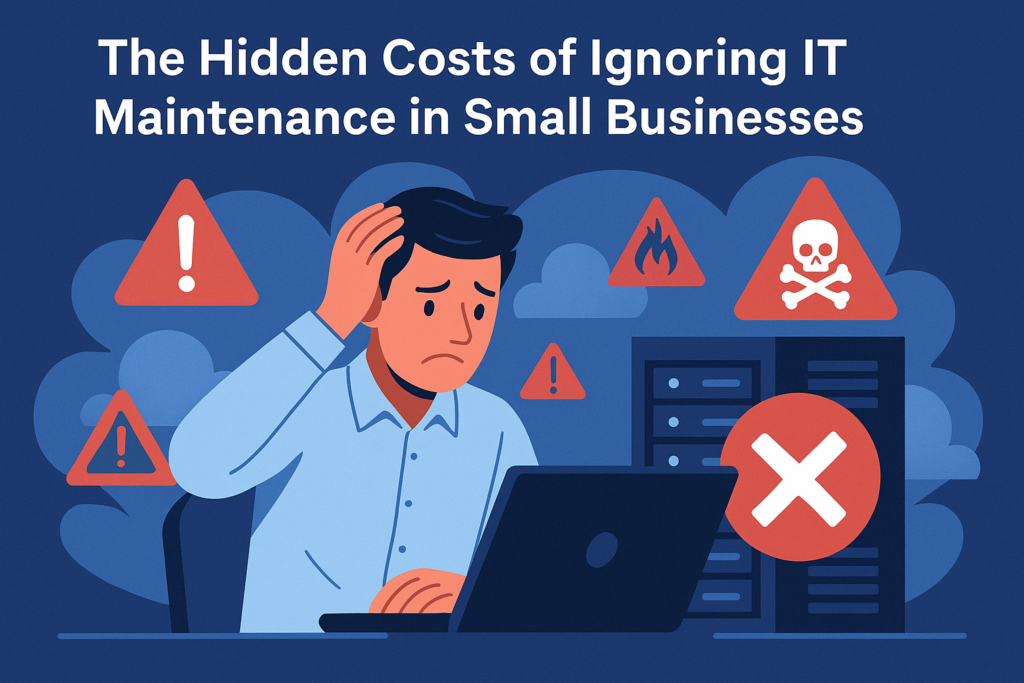Many small businesses operate with a “set it and forget it” mindset when it comes to their technology. Once the systems are up and running, there’s often a false sense of security that they’ll continue to function without much attention. However, this approach can lead to unexpected costs, security vulnerabilities, and long-term inefficiencies that eat into profits. Proactive IT maintenance is not just about keeping things running—it’s about keeping the business secure, productive, and prepared for growth.
Neglecting regular updates and health checks means systems can slowly degrade in performance. Software may begin to crash more frequently, networks might slow down, and minor issues can snowball into larger problems that require expensive repairs or full system overhauls. What’s worse is that failing to maintain IT infrastructure opens the door to cybersecurity risks. Unpatched vulnerabilities become easy targets for hackers, and one breach can cause serious harm, including data loss, legal issues, and reputational damage.
There’s also the cost of downtime. When a system unexpectedly goes down, employees are unable to complete tasks, customers experience delays, and revenue takes a hit. Scheduled maintenance helps prevent these interruptions by identifying and fixing issues before they cause real damage. Just like any other critical piece of equipment, IT systems need consistent care to perform well over time.
In addition, routine maintenance ensures that businesses remain compliant with industry regulations. Many compliance standards require ongoing security updates, monitoring, and documentation. Skipping these responsibilities can result in fines and audits that are difficult to recover from. Even for businesses that aren’t bound by strict regulations, maintaining current systems builds trust with clients who expect secure and reliable service.
Ultimately, IT maintenance is about foresight. It helps business owners plan for future upgrades, avoid emergency expenses, and stay competitive in a digital-first world. Waiting until something breaks is a costly gamble. Regular checkups and updates not only prevent problems—they also optimize performance, improve employee productivity, and support better decision-making across the organization.
If you are interested in learning more, Schedule a call today.

